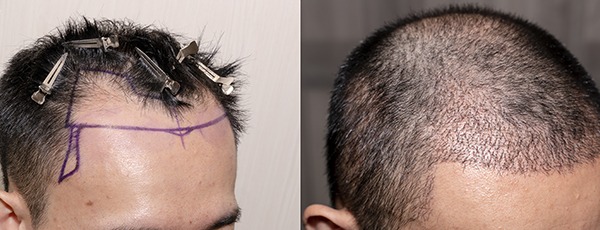Hair loss affects millions globally, and the desire for effective restoration solutions continues to drive innovation. This blog post delves into the exciting advancements in hair transplant technology, offering a glimpse into the future of hair restoration and its potential benefits for patients.
Minimally Invasive Techniques:
The trend towards minimally invasive procedures continues to shape the landscape of hair transplants. Here are some key advancements:
- Follicular Unit Extraction (FUE): This widely used technique involves extracting individual follicular units from the donor area, minimizing scarring and maximizing graft survival.
- Sapphire FUE: A refinement of the FUE technique, it utilizes sapphire blades for sharper incisions and potentially faster healing times.
- Direct Hair Implantation (DHI): This technique involves extracting and implanting follicles in one step, potentially reducing handling time and improving graft viability.
Robotic Assistance:
Robotics is gradually making its way into the hair transplant arena, offering the potential for increased precision, efficiency, and potentially superior outcomes:
- Robotic FUE Systems: These systems can assist surgeons with follicular unit extraction, potentially leading to a more consistent and efficient harvesting process.
- Robotic Hairline Design: Robotic technology can be used to design natural-looking hairlines, ensuring optimal aesthetic results.
The Future of Hair Restoration
These advancements are just the beginning. Here’s what the future of hair transplants may hold:
- Stem Cell Therapy: Research into using stem cells to stimulate new hair follicle growth is ongoing, offering a potentially revolutionary approach to hair restoration.
- Cloning Hair Follicles: While still in the early stages, cloning technology could one day allow for the replication of existing hair follicles, creating an abundant source for transplants.
- Artificial Intelligence (AI): AI could play a role in analyzing scalp conditions, predicting hair transplant outcomes, and customizing treatment plans.
Potential Benefits of Future Advancements:
The future of hair transplants promises exciting possibilities:
- Minimally Scarring Procedures: Advancements could further reduce scarring, making hair transplants even less noticeable.
- Faster Healing Times: Improved techniques could lead to quicker recovery periods after hair transplant procedures.
- Increased Density: Future technology may allow for denser hair transplantation, achieving more natural-looking results.
- Personalized Treatment Plans: Advanced diagnostics and AI could help tailor hair restoration solutions to individual needs.
- Conclusion
- The field of hair transplant technology is constantly evolving, aiming to provide patients with less invasive, more effective, and personalized hair restoration solutions. While some future advancements are still in the research phase, they offer a promising outlook for individuals seeking to address hair loss and achieve a fuller head of hair.






